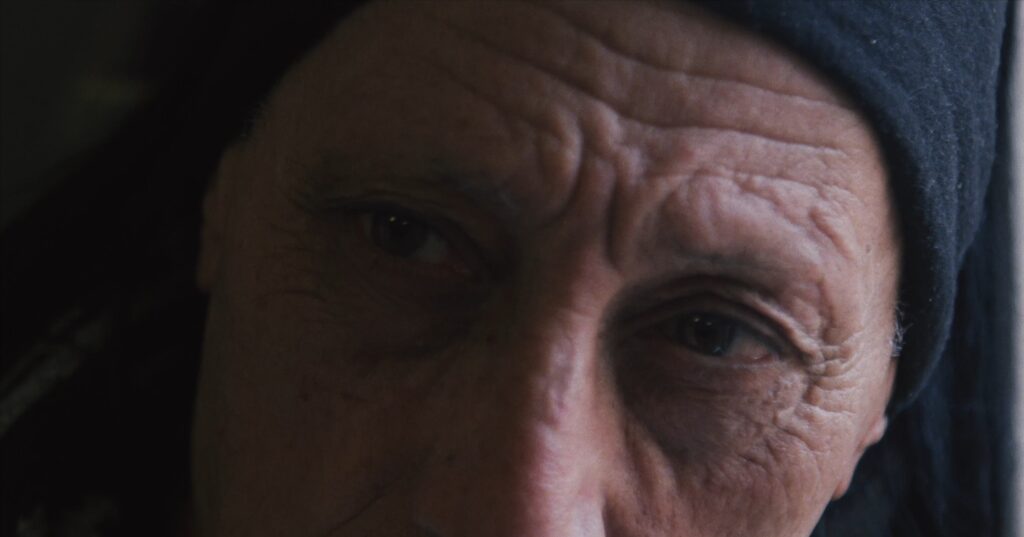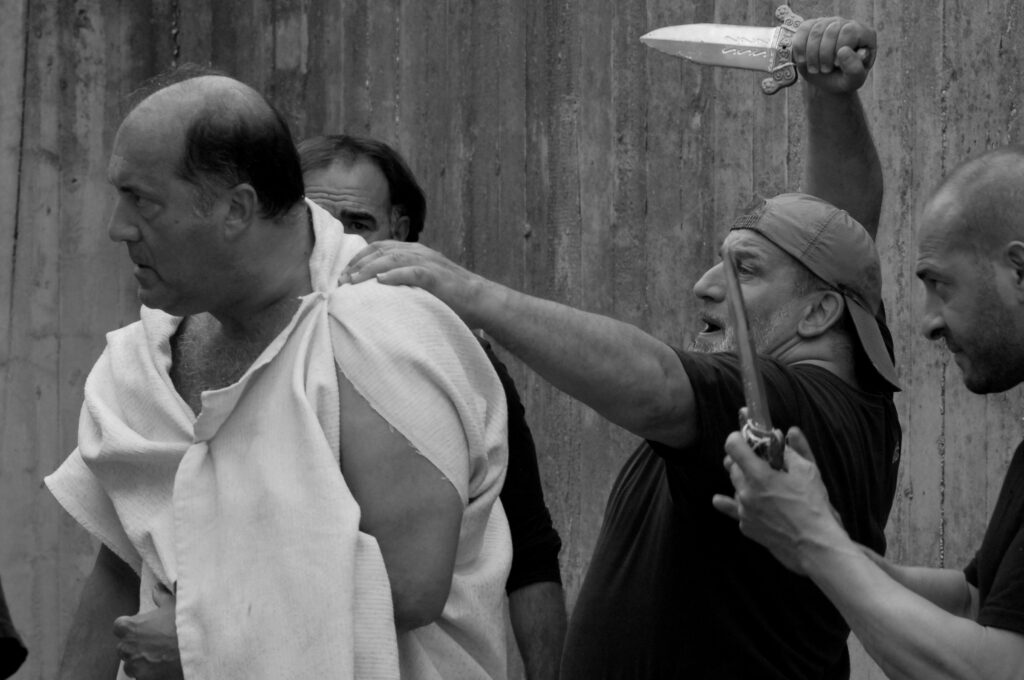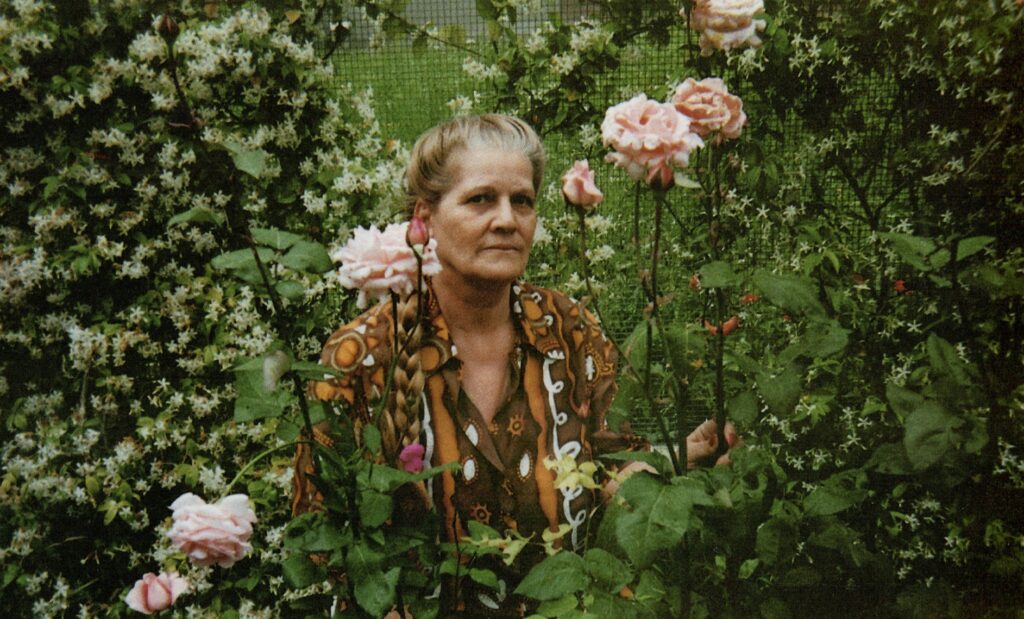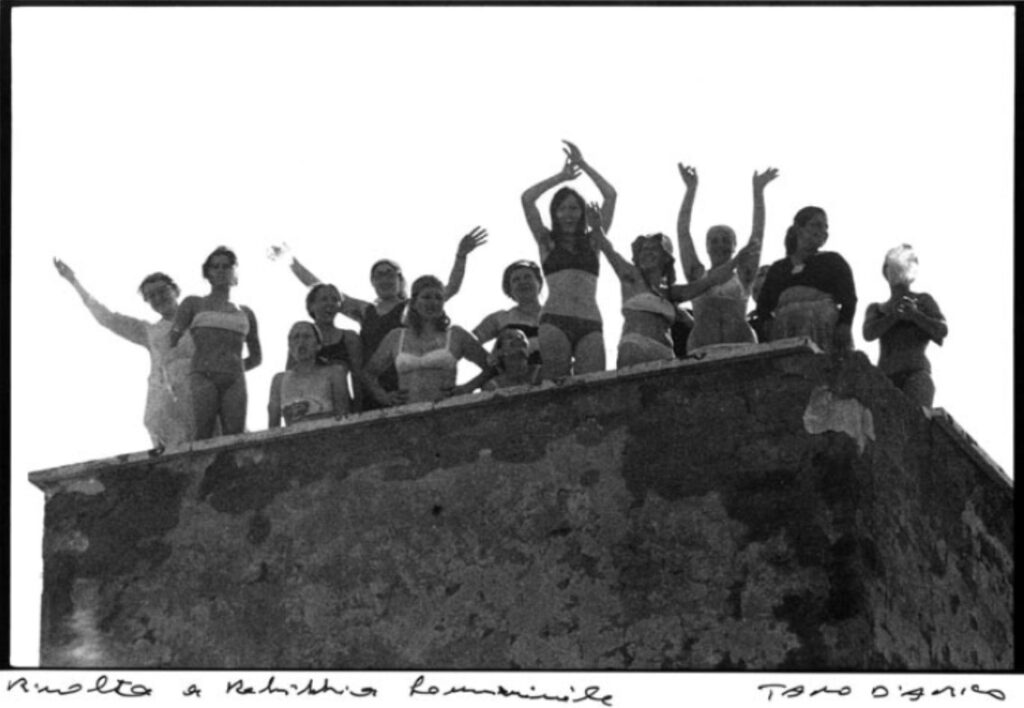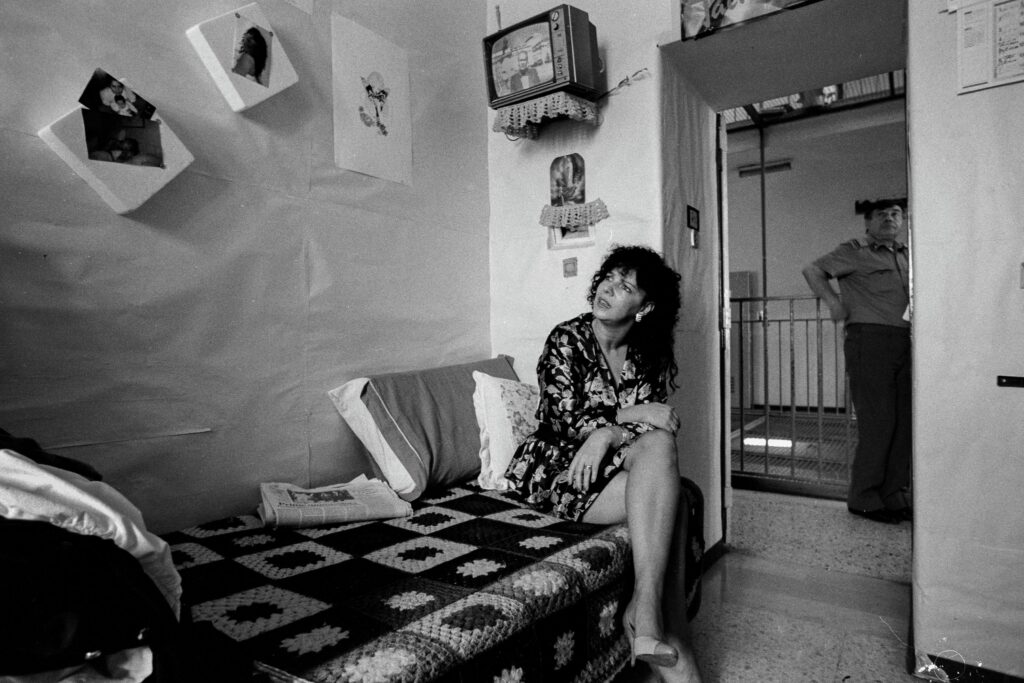The Restaurant Kitchen

Checchino: The Sound of the Slaughterhouse in a 5/4 cooking rhythm
Picture an urban countryside setting with vast stretches of meadows overlooking the Tiber. The slaughterhouse isn’t there yet, nor are any trattorias. This was Testaccio before Checchino, now a sanctuary for “locals only” cuisine, carried into the present by the three siblings Francesco, Elio, and Marina Mariani. They tell us the story of the establishment and the neighbourhood, almost as if they were one and the same.
It was back in 1870 when Lorenzo and Clorinda Morici (ancestors of the Mariani family) opened their tavern. A true embodiment of the term's original meaning: a wine shop offering house blends alongside a few slices of cheese, olives, or spicy mule jerky. «One of the first marketing strategies to encourage drinking», Francesco says with a smile while retracing the past.
In the 19th century, many Romans ventured into Testaccio’s fields for an “intra muros” day trip: different from trips to the Castelli Romani but similar in its rural picnic-style. Patrons with strong appetites were often entitled to bring their own food bundles (“fagotti” in Italian), thus earning the nickname “fagottari.”

Around 1885/86, news of the upcoming slaughterhouse opening lead the Mariani ancestors to apply for a kitchen license. They obtained it in 1887, shaping the very embryonic version of today’s legendary trattoria. The initial goal was to feed the workforce building the slaughterhouse. But since 1890, the influence of the slaughterhouse became one and the same with Checchino’s culinary mood, marking the birth of the kitchen myth of Sora Ferminia: heir to the original tavern, skilled cook and mother of Checco, who would later christen the restaurant with its iconic sign.
The flashback is interrupted by the arrival of a calf’s head terrine and a salad of boiled trotters in vinegar with minced vegetables. These are immutable features of Checchino’s menu, embodying collagen-rich symphonies of full, seductive, and uncompromising flavours. Elio Mariani, the chef, reflects on these recipes to explain the ancestral relationship with offal and the so-called “fifth quarter” cuisine: «It’s a mathematical absurdity. Cattle are divided into two forequarters and two hindquarters, but this classification excludes other significant cuts of the animal, such as the head, tail, legs, and innards. When combined, these parts weigh about the same as a traditional quarter. That’s how the term “quinto quarto” was invented. Its value went beyond ordinary dynamics because it was given as a bonus on the wage to slaughterhouse workers, the humblest class of butchers at the Mattatoio. They received part of their pay in money and part in the fifth quarter, which, by collective custom, they brought to nearby eateries to cook at the end of their workdays. Our repertoire stems from this exchange, as genuine as it was needed. We were forerunners of the zero-kilometer philosophy: here, it was zero meters cuisine! My family specialized earlier than others because we were lucky and smart enough to open our place in this very location. All the people at the Mattatoio knew us thanks to a trusting relationship, as they used to eat here almost every day. The commitment of our great-grandmother, and later our grandparents, was to never betray these human connections, taking great care of every element”.
It’s impossible to disagree with him after a papillary dive into the rich and thick sauce of an unparalleled “coda alla vaccinara” (oxtail stew). According to historical texts collected by Francesco, this dish seems to find its best origins in Ferminia’s kitchen: «Some link the inclusion of raisins, cocoa, and pine nuts in the sauce with the need to soften the marked flavours of the meat. The more plausible theory is that when this recipe began to attract noble palates, high-priced ingredients and spices, unaffordable for common folk, were added”. Whether this theory is credible or not, very little changes about the deliciousness of these sumptuous shreds of oxtail, garnished with a sauce that is pure Testaccio’s tasting essence.
In the 1950s, Checco and Sergio, the grandfather and father of the three siblings, witnessed the boom of Roman dining and the subsequent inflow of increasingly upscale customers. This fame sprang spontaneously, like every transformation, choice, or evolution undertaken by this tireless family unit.
“I have memories of my father serving plates of pajata to President Einaudi or Aldo Fabrizi”, recalls Francesco. “The restaurant has always been in our DNA. Our family has worked here every single day, personally engaging, living among the tables: a restaurateur with this mindset does that full-time, not as a detached entrepreneur. When this dynamic is maintained for over three generations, it becomes a precious heritage. But other factors too have helped elevate the place’s reputation: consider that in the 1950s, my father already had five French wines on the list. My brother Elio then specialized in oenology in the early 1970s, becoming a sommelier and enriching our wine list with selections of great international bottles”.
As we savour an imperious “Padellotto alla Macellara” (a signature dish made with sweetbreads, liver, and pajata roasted with vinegar and rosemary) the two brothers underline the importance of experiencing the restaurant environment from a young age, associating indelible meanings to every object and relic around us.

The walls are covered with precious “artifacts”, displayed among custom wooden tables and boiserie of timeless allure. The grandmother’s “chitarra”, a tool used to roll out pasta sheets and craft fresh tonnarelli; the sharp knife for preparing “bue garofolato”, a fixture on the menu; the old oil scales marked in “decini”; and not least, the cheese cart, a love-at-first-sight purchese from a Bordeaux artisan during one of Elio’s trips to France.
“My mother often argued about the fact that the set cost as much as an apartment! But the beauty of showcasing and serving the finest dairy products from our country and region still gives me an immutable joy. Even the process of working with the pajata knots fascinates me as much as the first time I saw it, and I would never delete it from the menu. Just like the crostino (toasted bread) with guanciale toasted in the oven: my favorite snack as a child”.
Currently, the arrival of my nephew Simone, a bartender who has won several international competitions, is giving new lifeblood into the restaurant. He has great talent and a deep cultural passion for mixology. He creates everything himself (from herbs to citrus, essences, syrups, and perfumes) essentially designing a sort of liquid cuisine that communicates with the restaurant’s traditions. One of his most popular creations is the Bloody Mary made with the sauce from the oxtail vaccinara”.
We sink our spoon into Marina’s tiramisù (the sweet, feminine side of the three siblings) as we say goodbye to Francesco, who’s willing to grant us one final insight: «Everything that has depth, roots, commitment, and emotion will always be welcomed. Of course, it must be discussed within the family, sometimes even arguing, but this kind of pattern has always been a part of our essence, and I believe it is the right approach. Each of us is an integral element of this place, its history, and the process that the future will hold for a place that is so much more than just a restaurant to us”.


Flavio: the king of “Cocci” and the ethics of the innkeeper
“I was born in Garbatella, but I could never go away from here”, declares Flavio De Maio emphatically as we seat into one of the outdoor dining areas of his restaurant. “Partly because this is where my beloved Roma’s stadium was supposed to be built, and partly because the historical significance of this unusual little mountain fascinates me every day I step into the kitchen at seven in the morning”.
Flavio al Velavevodetto is nestled within Monte dei Cocci, a hill formed from ancient layers of amphorae that once arrived from Spain and Africa. This monumental 36-meter-high artificial hill spans about a kilometer in circumference in the heart of Testaccio. “This hill is proof to the skills of our ancestors, while we can’t even manage our waste sorting”, Flavio quips in his unmistakable Roman accent, both learned and biting.
Born in 1956, with a Roman heart and proud family roots into southern Italy, Flavio’s journey is one of hands-on experience and a career marked entirely by passionate determination.
It was so strong and relentless that he left a prominent position at a leading IT company to throw himself—without any prior experience—into the adrenaline-filled and fiery action of the restaurant business: «I grew up with the aromas of Neapolitan moka coffee and the gentle sound of meat sauce bubbling in the pot. My mother was from Benghazi, while my father was from Caserta, and their relationship in the kitchen was harmonized thanks to the great love he had for good food, and the joy she took in cooking it for him. This heritage runs in my veins, along with the movements I observed at the stove and the tools that are stamped my memory. One stands out above all: the wooden spoon, or “cucchiarella” which served a dual purpose. Once its job at the stove was done, it became a “lethal weapon” if you misbehaved. There was no escaping it! It impressed me so much that I could never live without it”.
He jokes all the time, and in just a few moments, our table is full of platters of stewed oxtail, Roman-style tripe with mint and radiant Piennolo tomatoes, lamb offal with a memorable texture, fried lamb chops, and incomparable boiled meatballs with a filling that is silky, spiced, and mesmerizing. Every single product, despite the high volumes his restaurant handles, is the result of an obsessive search on a quality level. This exemplary trait has been fostered since his early steps in the field: «After taking over a small eatery with my cousin when I was thirty, I became completely infatuated with this job. For me, it was as strong as falling in love with a woman for the first time. Then, after a chance meeting at a trattoria in Capannelle with the son of Felice (from the legendary namesake restaurant in Testaccio, ed.), I got in touch with his grandson Maurizio to start working there, quitting my previous job all of a sudden. It was a particular time for Felice’s restaurant, because of a difficult generational passage, but I was still able to experience and contribute to its comeback, as well as striking up an invaluable friendship with Felice himself. Even now, mentioning his name makes me feel a deep sense of emotion and affection. He made just a handful of dishes, but they were perfect in their imperfection. Like the oven-cooked lamb that I still serve. Authentic flavours, and therefore imperfect in their many nuances. In my cooking mindset, the closer something gets to idealized perfection, the more it risks becoming a fake”.

We have no doubts about his philosophy-veined principle as we twirl forkfuls of tonnarelli alla gricia or cacio e pepe nel tovagliolo, a tribute to the pastoral recipe revived by chef Salvatore Tassa, or cooked into a hyperbolically rich sauce for stuffed beef rolls. These robust, dense dishes, filled with contrasts and dynamicity, add unbeatable depth even to things that may seem simple to all appearances.
Working with Felice, I learned everything about Roman tradition, the moods of the neighbourhood, and the appetite of its residents. A key factor was understanding the value of the gestures that give a soul to this cuisine: I loved his way of trimming artichokes, his routine for preparing baby eels with peas, or the quadrucci soup on lean days. More than the individual dishes, what truly amazed me was going to the market with him and understanding how to shop properly. This is a legacy that still influences me today, every single day. For me the choice of good-quality ingredients comes first, whether it’s a morning trip to the local market or journeys outside the city to visit artisanal farmers. At Flavio’s, the concept of food cost is banned because quality pays you back just as much as the time it takes to achieve it. I learned this lesson early during my apprenticeship”.
As an “exotic” interlude before dessert, the Southern culinary roots of our cook offer us a pasta fritters with ‘nduja, with astonishingly spicy and creamy nuances. It’s a perfect excuse to highlight his unbreakable bond with Southern Italian art of cooking and the flavours and customs of Lampedusa: a regular vacation destination and an oasis of peace where he goes to regenerate periodically.
“The discovery of that place was both accidental and crucial. There, I breathe in the mixed aromas of iodine, Africa, and grilled fish that I catch from the boat and barbecue just moments after cleaning it on the bow. For me, Lampedusa is the noblest meaning of solitude. If solitude finds you during your journey, it can be crazily tough; but if you are the one seeking it, you have the opportunity to discover a new way of living”.
These crystal-clear pearls of wisdom go beautifully with bites of an extraordinary ricotta and sour cherry tart at the ending. It’s the perfect assist to reveal a crucial connection and a sneak preview:
“Many of the dairy products, cheeses, organic eggs, and lamb I use come exclusively from Abruzzo. I drive countless kilometres every week to visit trusted small producers, but these ingredients make all the difference in my dishes. This connection also developed thanks to my friend and chef Franco Franciosi of Osteria Mammaròssa in Avezzano, whom I consider one of the most admirable colleagues, both personally and professionally. Next year, we plan to open a new restaurant together in Garbatella. It will be called Orso, named after the seemingly rough nature we both share. It will be a way to reconnect with my childhood roots, without ever leaving the heart of my work, which will always be here, deep in the potsherd of Testaccio”.

Piatto Romano: Research and wholesomeness without boundaries.
The moments before service evoke inimitable agricultural atmospheres: Chef Umberto Mussato skillfully juggles with carnivorous cuts, aromatic herbs, vegetables, and fruits of all kinds, constructing a new prep area day by day. Meanwhile, the tireless sous-chef Gino (nicknamed “Duca Bianco”, white Duke) stocks and meticulously cleans wild vegetables he collected just hours earlier from the fields with Andrea D’Alfonsi. Andrea, owner and factotum at Piatto Romano, doesn’t even have time to unload an oversized backpack brimming with vegetables before he's back on his motorcycle for his daily rounds at the Testaccio Market. “Every day, from seven in the morning. This is my life therapy”, he says without hesitation, jolting through the stalls as if almost possessed by a mystical, driving energy. At the market, Andrea is a bit of a VIP, and everyone greets him enthusiastically as he scrupulously selects bunches of chard, wild broccoli, rare cuts of meat, hidden fruits, and everything his super-ethical philosophy could possibly suggest.
When I shop, I always start with an idea that goes much deeper than just the organoleptic validation: what I serve must be a healthy and nutrient-rich meal. Here at the market, I’ve been lucky enough to talk with farmers, butchers, and growers, who, through my insights, have become willing to search for sometimes rare or even forgotten products, which I never fail to buy, in a mutual exchange of growth and support”.
Andrea is a tornado of genuine values, relaunched by a journey of self-identity affirmation in reverse: born into a historic family of restaurateurs with several venues in the capital, he began his kitchen training at a young age before embarking on travels around the globe, pursuing his job as a spelunker and explorer. It was during this intercontinental pilgrimage, made of study and research, that he rediscovered his passion for food and the art of serving others, accompanying it with ideals of nutritional wholesomeness that are almost scientific. Listening to him as he lists the properties of the ingredients is like reading a thematic dictionary, filled with notions worthy of a seasoned dietitian.
“I became increasingly passionate about research. Study has been my first drive, far beyond the making of a single dish with meticulous care. I can’t conceive serving you something that isn’t radically healthy: I couldn’t go on without this motivation. I study every product I propose and know it inside out, always trying to handle it in the best way possible for those who consume it. This personal mission stems from my origins, having grown up in rural areas on the border between Lazio and Abruzzo, where I still have lots with a small vegetable garden. My memories are punctuated by pastoral areas, dewy with wild vegetables, mushrooms, chestnuts, cattle raised at high altitudes, and ancient grains. A material imprint that has leaded me to this point”.

Piatto Romano is not a typical trattoria and it becomes immediately evident as soon as you sit at the table, welcomed with Solina wheat bread and sourdough from the talented baker Nader Abdelkader, and a relentless series of small plates with a bright personalities: nerve salad with persimmon, daikon, and pink pepper marinade; veal tongue with pineapple kimchi; kidneys in butter with green pepper and quince, superlative; old cow heart cooked to millimetric perfection, with Moroccan lemon oil and a smooth spiced mashed potato. Also, the iconic vegetable courses, the hallmark of every meal here: Rotonda IGP red eggplants and a kaleidoscopic wild salad with a dressing of vinegar and anchovies, which changes with seasons.
"This space was acquired by my father around 2010 to entrust its management to my sister and open a restaurant/pizzeria of ordinary Roman background. My sister is a very brilliant person, but not particularly familiar with the dynamics of the restaurant business. So, when she asked me for help, I put everything I had learned from my travels and studies into this project. By 2013, I was already offering dishes exclusively made with vegetables sourced from heroic foragers, playing with the purchase of ultra-selected raw materials. At first, however, my approach, perhaps too “fundamentalist”, was not understood by everyone, and the presence of pizza in the menu hindered the relevance I wanted for my philosophy”.
Andrea managed to carry out his micro-revolution by taking over the shares of the restaurant as the pandemic spread, establishing his “gospel of vegetables” and removing the pizzeria from the offering, though not shutting down the ancient wood-fired oven: “My memories are moulded by the scents of the grill, by the conscious use of live fire. The tone of wood-fired cooking is considered aggressive, but for me, it give an inimitable depth to the dishes. With proper fuel maintenance and temperature control, I cook everything I can in it: cakes, large cuts of meat like veal breast, poultry, fruit, and fish. I love what is out of time and free from speed. I don't use sous-vide rones or other extreme technologies: every gesture is also focused on an ecological mindset, as I try to make the most of the resources and tools I’ve inherited here”.
A vision that has gradually pierced the awareness of the guests and, over the course of about ten years, has led to exponential growth in the customers numbers. This is also thanks to Umberto’s creative contribution in the kitchen: “With him, we work only with fresh ingredients and aim to eliminate all forms of waste, abolishing freezers and using every element 360°. On the vegetable side, the research has risen immeasurably, with at least nine vegetable side dishes on the menu every day, most of which come from wild foragers”.
As he traces back the changes of the restaurant, Umberto enchant us in succession with tagliolini with cruschi peppers and red garlic from Sulmona, followed by a memorable interpretation of the classic rigatoni with pajata in tomato sauce. “Tradition must be respected but reinterpreted with evolution. It should not be stale and always anchored to itself. I hate everything that is confined, because we cook in a place that still gives off the scents of one of the most important ports of ancient times. Spices from distant lands would arrive at Ostia and went upstream on the river, arriving here at the Monte dei Cocci. If I set eye on an amazing product like the Senise crusco pepper, I can’t help but enhance it with a minimalist recipe that highlights its many qualities. This applies to any niche ingredient, from Asian peppers and chilies to organic Sicilian mangoes, to Calabrian bergamot, which I personally candy every year. Through the celebration of great raw materials, we can broaden the space and tell the story of a boundless territory. The same logic applies to the traditional pajata, a dish I would never remove from the menu, given the research we’ve done to maximize its essence. We use only pajata from the Marche breed, raised in the high pastures of the Sibillini Mountains, and we handle it with care at every stage of cleaning and processing. It should not be drowned in fat or too much seasoning but cuddled in sweet tomato, like the pear-shaped tomato from Abruzzo, which preserves its milky smoothness, releasing lightness and fullness with each bite. Mine is such an obsession that I have pasta specially made for us by an artisan pasta shop, using only stone-milled ancient grains”.
And here they land on the table, portions of wild rabbit from Viterbo, prepared cacciatora-style, and grilled wild sheep ribs land on the table, accompanied by a rich assortment of amaranth, tender shoots, ramolacci, and wild mustard, all expertly seared in a pan. Vivid, persistent flavours with an impressive taste power. The brilliant closing dessert, made with white chocolate cream flavoured with isot biber chili, mango cubes, and raw cacao beans, inflame a taste climax so phenomenal that one feels compelled to discover more about the person behind it: Umberto Mussato, born in 1992 in Padua, who followed the toughest path in the kitchen, fine dining, achieving prestigious positions at the Michelin starred Venissa in Mazzorbo and then at Retrobottega and Marzapane in Rome. The magical connection with Andrea sparked after a working lunch at Piatto Romano in 2021: “I was reluctant to work in a trattoria, but after eating here, I was literally shocked because I immediately saw elements to grow and learn. I was looking for substance and knowledge about raw ingredients that I couldn’t find in fine dining establishments. When Andrea told me he didn’t freeze anything, I almost couldn’t believe it. But when I first came here, I realized not only that it was true, but that it was a tough process to manage. At first, to encourage me, he offered to buy new equipment, but the truth is that it’s the places I come from that need to learn how to work with these types of ingredients. He then proved to be an unprecedent food scout, giving me a free hand to experiment with Roman cuisine-infused contaminations, including homemade kimchi and fermented products. For us, cooking is an act of love, but for our customers, it is an act of enormous trust that must never be betrayed”.
